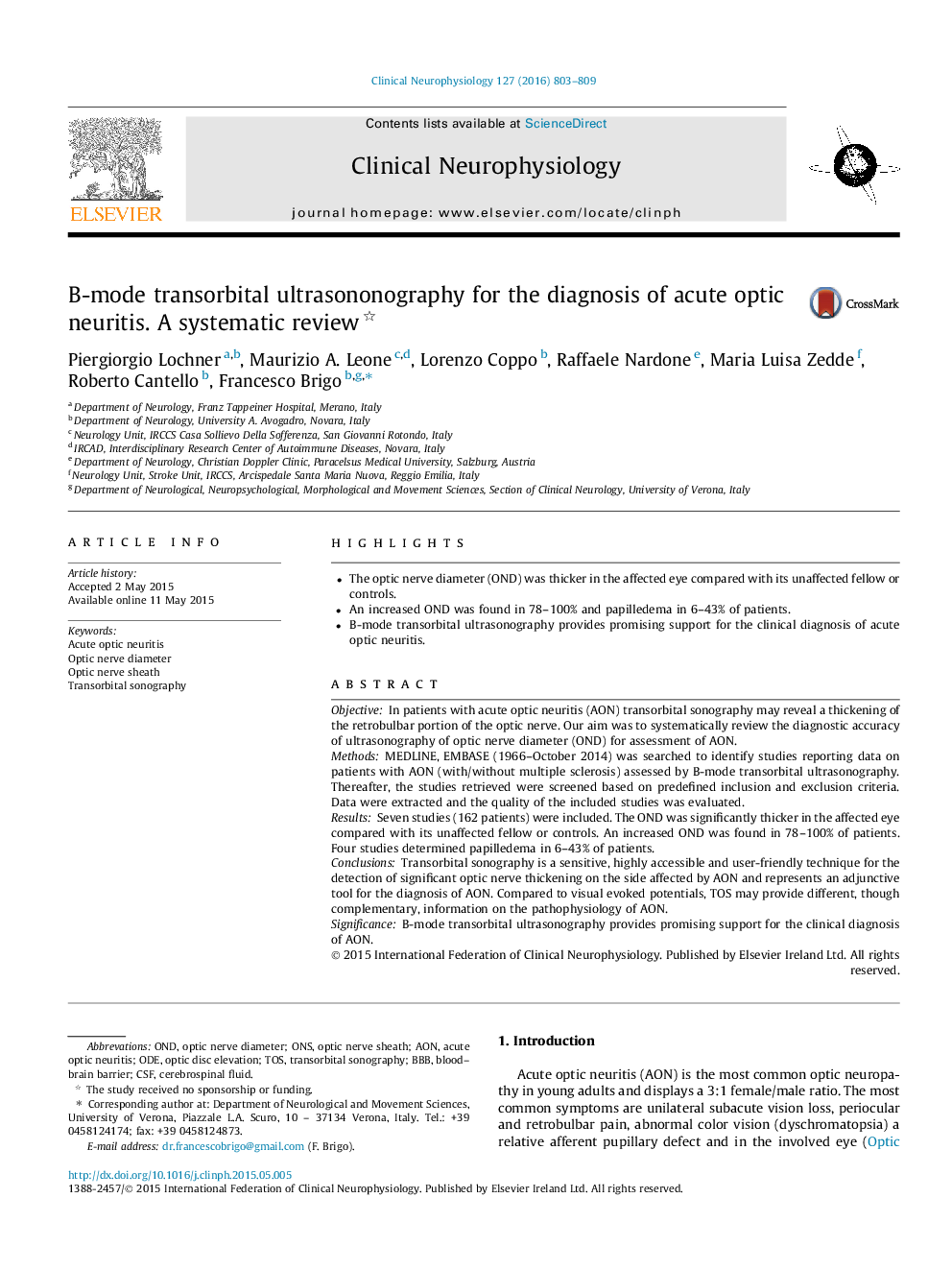| Article ID | Journal | Published Year | Pages | File Type |
|---|---|---|---|---|
| 6007994 | Clinical Neurophysiology | 2016 | 7 Pages |
â¢The optic nerve diameter (OND) was thicker in the affected eye compared with its unaffected fellow or controls.â¢An increased OND was found in 78-100% and papilledema in 6-43% of patients.â¢B-mode transorbital ultrasonography provides promising support for the clinical diagnosis of acute optic neuritis.
ObjectiveIn patients with acute optic neuritis (AON) transorbital sonography may reveal a thickening of the retrobulbar portion of the optic nerve. Our aim was to systematically review the diagnostic accuracy of ultrasonography of optic nerve diameter (OND) for assessment of AON.MethodsMEDLINE, EMBASE (1966-October 2014) was searched to identify studies reporting data on patients with AON (with/without multiple sclerosis) assessed by B-mode transorbital ultrasonography. Thereafter, the studies retrieved were screened based on predefined inclusion and exclusion criteria. Data were extracted and the quality of the included studies was evaluated.ResultsSeven studies (162 patients) were included. The OND was significantly thicker in the affected eye compared with its unaffected fellow or controls. An increased OND was found in 78-100% of patients. Four studies determined papilledema in 6-43% of patients.ConclusionsTransorbital sonography is a sensitive, highly accessible and user-friendly technique for the detection of significant optic nerve thickening on the side affected by AON and represents an adjunctive tool for the diagnosis of AON. Compared to visual evoked potentials, TOS may provide different, though complementary, information on the pathophysiology of AON.SignificanceB-mode transorbital ultrasonography provides promising support for the clinical diagnosis of AON.
